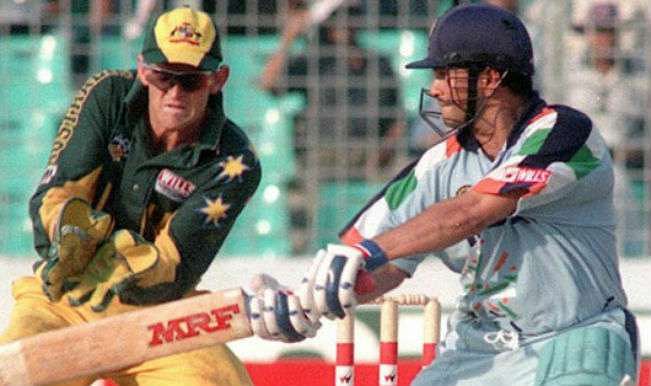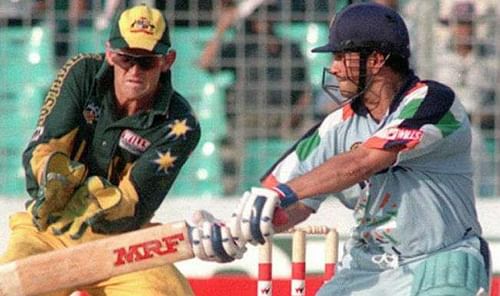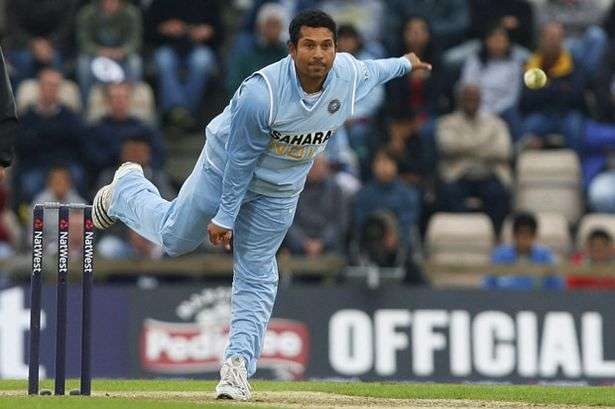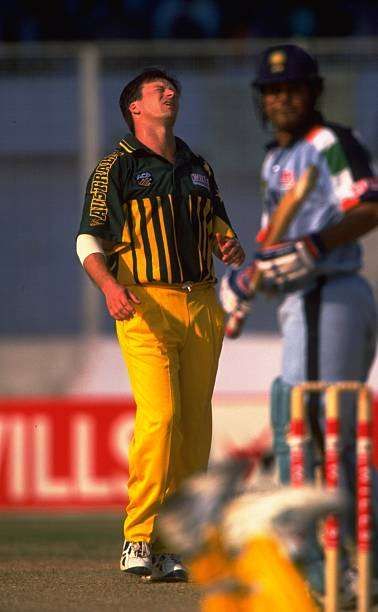
Remembering Sachin Tendulkar's 141 against Australia in 1998 - when the storm moved from Sharjah to Dhaka

The year 1998 was named the International Year of the Ocean. If one was to name this year in terms of achievements in cricket, then it could have easily been called the “Year of Sachin Tendulkar”.
Sachin was an ocean of runs in 1998. And when the opposition was Australia, he was quite a violent ocean with storms and tornados. He dismantled the Australians in Test matches and ODIs with both the bat and ball.
Runs and wickets galore
For the record, he scored 621 runs against the Australians in seven ODIs at an astonishing average of 88.71 with the help of four centuries. In three Test matches, he scored 446 runs at an average of 111.5 with the help of two centuries. With the ball, he took 10 Australian wickets in ODIs at an average of 16.20 including one five-wicket haul.
This year is best remembered for his knocks in Sharjah, dubbed the ‘Desert Storm’. But there was another gem from the Little Master in that same year. The venue was the Bangabandhu National Stadium in Dhaka in the ICC Knockout Trophy (now ICC Champions Trophy).
The storm moved from Sharjah to Dhaka and it was once again the Australians who had to face the consequences. India, who were put in to bat by the Australian skipper Steve Waugh, were struggling at 8/2 in the third over. This wasn’t a totally unfamiliar situation for Sachin as he had been the Indian batting’s lone flag bearer for most of the decade.
Raining boundaries and sixes
The Indian spectators were silent, but as it turned out, it was just the lull before the storm as Sachin wreaked havoc over the Bangabandhu National Stadium for the next 40 overs. He began by playing his trademark backfoot punches off the bowling of Michael Kasprowicz.
Slowly, along with Rahul Dravid, for the umpteenth time, he got India back into a position of strength. Unlike in his later years, Sachin did not mind dancing down the wicket to hit spinners over the top. And left-arm orthodox Brad Young was given the treatment by the Little Master.
He was particularly harsh on the spinner and hit him for two consecutive sixes in the 25th over of the innings. He followed the two sixes with a boundary, making a mockery of Young’s bowling.
In the 34th over of the innings, the maestro from Mumbai brought up his 19th ODI century off just 94 balls with a single to mid-off.
Third consecutive ODI century against Australia
Incidentally, this was his third consecutive century against the Australians in ODIs. Storm Sachin continued well past the 100-run mark and ultimately, only a run-out could end his inspired innings. A misunderstanding between him and Jadeja resulted in the Master Blaster being found short of the crease on a score of 141. India ended up scoring a massive 307 runs for the loss of eight wickets in 50 overs.

“Will bowl both off spin and leg spin”
The men from Down Under could have been forgiven for thinking that the storm had passed. They were, however, quite badly mistaken After a brief lull, Australia’s nemesis was back; this time with a ball in hand.
Earlier, Dravid had mocked Sachin by saying, “Off-spin bhi daalega, leg spin bhi daalega” (Bowl both off spin and leg spin) and the master didn’t disappoint.
First Indian to score a century and take four wickets in an ODI
At the end of the innings, his figures read four wickets for 38 runs. This included the crucial scalps of Steve Waugh and Michael Bevan. India eventually won the match by 44 runs when Sachin got the last Australian wicket, that of Young.
In the process, he had become the first Indian to score a century and take four wickets in an ODI. His score of 141 is also the highest amongst players who have taken four or more wickets in an ODI.
As former Australian skipper, Mark Taylor, had famously stated after the Chennai Test in 1997, “We did not lose to a team, we lost to a man called Sachin”. Given his all-round performance, it wouldn’t be wrong to say that Sachin had once again single-handedly stood between the Australians and victory.
He was adjudged the Man of the Match for the sixth time in seven matches that year against his favourite opponents.
